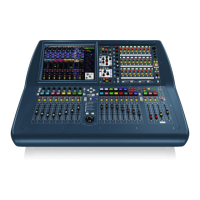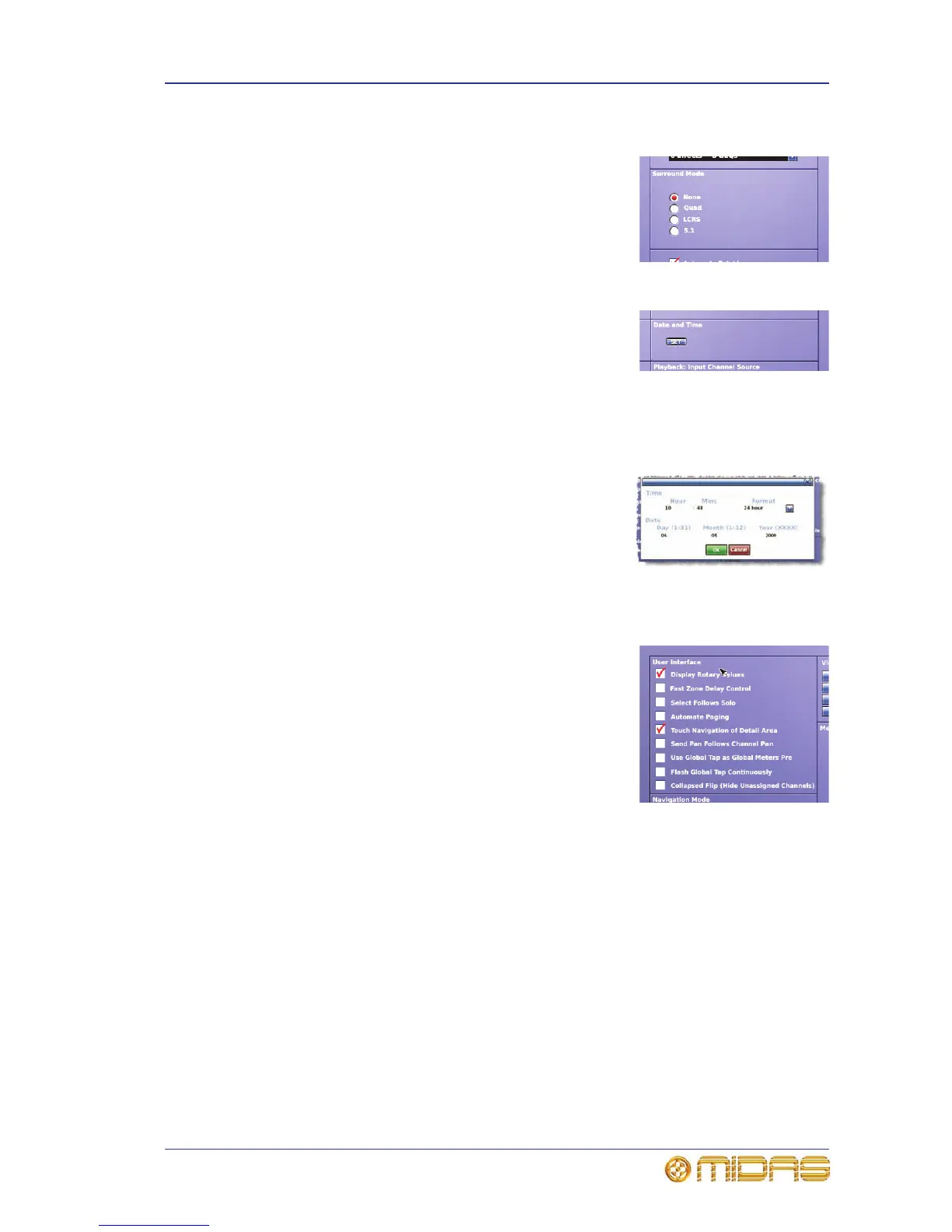Selecting the surround mode 209
PRO2 Live Audio System
Owner’s Manual
Selecting the surround mode
The Surround Mode section of the Show tab lets you
select the type of surround mode that the PRO2 uses. For
information, see “Selecting the surround mode” on
page 209 and “Surround panning” on page 100.
Setting the time and date
The Date and Time section of the Configuration tab lets
you change the PRO2’s time and date.
>> To set the time and date of the PRO2
1 At a GUI screen, choose homePreferencesGeneral.
2 In the Date and Time section of Configuration Preferences, click SET.
3 In the time and date window, enter the time (hours
and minutes) and date. Make sure you enter the
time correctly, according to the currently
configured Format, that is, 12-hour (a.m. or p.m.)
or 24-hour.
4 Click OK.
Setting the user interface preferences
The User Interface section of the User tab lets you set
some of the PRO2’s operating parameters to suit your own
preferences.
• Display Rotary Values — the current value of a
control knob can be displayed as a numerical value on
the GUI (see “Parameter values displayed on touch” on
page 40).
• Fast Zone Delay Control — choosing this option
means that you place the delay control for the inputs
onto the surface controls. To do this you have to cycle the gain SWAP button (see
“Using gain swap” on page 247) through digital gain, analogue gain and then delay.
Without selecting this option, the inputs delay control is a GUI only feature.
• Select Follow Solo — when you solo an aux or matrix output, the channel is
automatically selected, thus bringing the output controls to the surface detail area.
This option only works in fader flip mode.
• Automate Paging — choose this option to store channel paging in automation. So
that, on scene recall, the control surface (channels assigned to it) will revert to the
state it was when the scene was last saved. When unselected, scene recall does not
affect channel paging.
• Fader Touch Navigation of Detail Area — choose this option to navigate the local
detail area on the control surface (right of the GUI screen) to the GUI detail area
when one of its touch-sensitive controls is operated.
• Send Pan Follows Channel Pan — if a channel is contributing to a stereo mix bus
(for example, stereo aux channel), choosing this option will cause the pan for the
contribution to mirror that of the channel pan.

